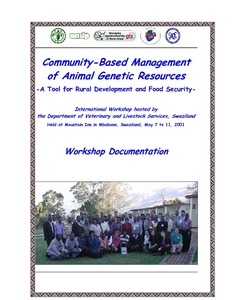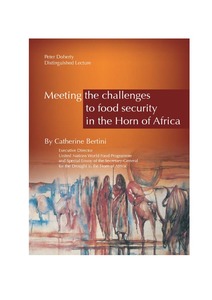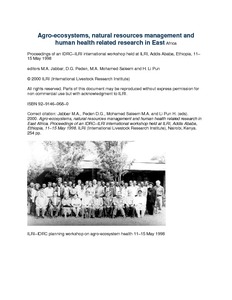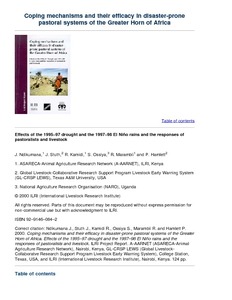Integration of indigenous knowledge into land-use planning for the communal rangelands of Namibia
The paper argues that the indigenous knowledge of the Herero could provide the basis for better land-use policy and user rights in the communal lands of Namibia.This short article:reviews recent academic literaturelooks at the historical and legal backgound to land management in Namibiareports in 2 village field studies
Herders and common property in evolution: an example from central Italy
This article discusses the transhumant pastoralists of the Abruzzo highlands of central Italy. The article indicates that this system of production depended, and still depends, on the availability of communal grazing areas where access is open to all local residents and management is joint. The article discusses the relationship between herders, common property regimes and the State.The article concludes that:as a pastoral system increases in complexity, from being a self contained CPR to an outward-looking one, with moveable assets and flocks, transaction costs increase.
Bracken distribution in Great Britain: strategies for its control and the sustainable management of marginal land
Bracken is often perceived as a widespread and increasing land management problem. The pollen record of a wide range of sites in Great Britain suggests that the current abundance of bracken is less than or, at worst, equivalent to maximum historical levels. Recently gathered data also suggest that bracken cover is declining. Results of risk assessments of land use change, and experimental and modelling investigations into the effects of climate change are synthesized.
Invasive weeds in rangelands: Species, impacts, and management
Rangeland and pastures comprise about 42% of the total land area of the United States. About three-quarters of all domestic livestock depend upon grazing lands for survival. Many ranges have had domestic stock grazing for more than 100 years and, as a result, the plant composition has changed greatly from the original ecosystems. Western rangelands previously dominated by perennial bunchgrasses have been converted, primarily through overgrazing, to annual grasslands that are susceptible to invasion by introduced dicots. Today there are more than 300 rangeland weeds in the United States.
Vegetation‐environment relationships in Atlantic European calcareous grasslands
The relationship between vegetation and environment was investigated for calcareous grasslands in a region in the west of Spain, France, Britain and Ireland defined by climatic criteria. Vegetation was sampled using objective methods and data collected on soils, land cover, location and management. Climate data were obtained from an available database. Examination of the first axis of vegetation variation as defined by Detrended Correspondence Analysis (DCA) showed a gradient from the Irish and British samples to those from France.
To ranch or not to ranch: home on the urban range?
California ranchers in urban Alameda and Contra Costa Counties, and in rural Tehama County, were surveyed to examine effects of increasing development, land use change, and attrition of the ranching community on their commitment to ranching, and to assess land conservation program acceptability. Questions were about practices, reasons for ranching, and what influences ranching's future. Ranchers share much in common. Most enjoy ranching, "feeling close to the earth," living in a "good place for family life," and the camaraderie in the ranching community.








